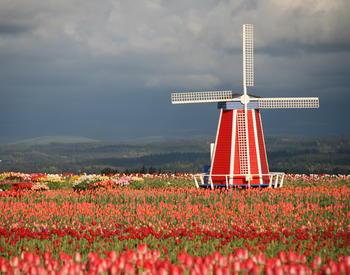Thinking about agritourism for your farm? Here's what to consider
Why agritourism?
Many farms and ranches around the country are diversifying their offerings and enhancing profitability by adding agritourism. According to the American Farm Bureau, agritourism is “an enterprise at a working farm, ranch or agriculture plant conducted for the enjoyment of visitors that generates income for the owner.”
Agritourism has benefits for both the farmer/rancher and the consumer. In addition to serving as an additional source of income, agritourism can benefit farmers/ranchers by:
- Creating name recognition for their agricultural products.
- Educating consumers about farming/ranching and America’s rural heritage.
- Generating financial incentives for the protection and enhancement of a farm's or ranch’s natural resources and natural amenities.
- Generating “spillover” economic development opportunities in your community by bringing tourists into town who may then shop, eat and stay locally.
Is agritourism for me?
Agritourism is not for all farms and ranches, and many agritourism projects don’t achieve the level of anticipated success. Others have thrived. A study conducted by Rutgers University described negative aspects as well as positive ones. Part of running an agritourism business is putting yourself, your family and your farm “on display.” It also requires occasionally dealing with difficult and demanding customers. Before you decide to embark on an agritourism venture, ask yourself:
- Am I comfortable putting my family and myself on display?
- Do I enjoy interacting with all types of people?
Who is my customer?
The people who choose to visit farms are often seeking “authentic” experiences. Many times these people are not directly involved in farming/ranching but are interested in learning about it. Your customer could be:
- A tourist with an interest in preserving farms and the rural way of life.
- Someone interested in establishing a deeper connection with food than what shopping at the supermarket allows.
- Someone interested in exploring rural landscapes and seeking rural wildlife.
- Someone who probably lives in the same state or region of the country as you do since most agritourism customers travel only regionally for their experiences.
- Someone who is likely to be middle-aged or younger and physically fit.
- A group such as an extended family or school or church group.
What is my product?
There are many types of agritourism. The most popular activities include:
- Bed and breakfasts.
- Meals featuring farm products.
- Hayrides.
- Farm/ranch tours.
- Direct sales (e.g., roadside vegetable stands and pick-your-own produce). Agritourism entrepreneurs are constantly redefining their products.
Your product needs to address a demand in the tourism industry that is not satisfied elsewhere. There are many things you can do to make your product stand out. These include making sure your product is:
- Clearly different from the other stuff out there.
- Very high quality.
- Seasonal in nature.
- Original and innovative. Focus on freshness of produce and quality customer service.
How can I evaluate my potential agritourism site?
Agritourism is a way to add value to your farm/ranch without adding acreage. Not all properties have the right mix of natural and physical amenities to take advantage of the benefits of agritourism. Your product and what you do with it will depend in part on the landscape and natural resource endowment of your farm/ranch. Evaluate factors such as:
- Land use.
- Characteristics of the landscape.
- How close your farm/ranch is to population centers.
- The types of buildings you have.
- Your human resource assets.
How do I market my agritourism enterprise?
You may want to consider the following issues when designing your marketing strategy:
- Does your marketing approach emphasize the uniqueness of your product?
- Do you know your customers and have you directed your appeals to the specific types of people that you are targeting?
- Have you selected an appropriate name? The Direct Farm Marketing and Tourism Handbook reminds potential agritourism operators to “avoid creative names that may serve to confuse your customer” and suggests using the owner’s name in the business name to create “a more intimate and sincere relationship with the consumer.”
- Have you identified advertising strategies? Most studies show that word of mouth is the most effective way to promote agritourism ventures. Luckily, this is the least expensive way to promote your product as well. But remember, successful word of mouth depends entirely on customer satisfaction. Other effective, low-cost methods include brochures and websites.
Fact sheets
Agritourism Online Resources Fact Sheet (PDF)
Agritourism Marketing Fact Sheet (PDF)
Best Management Practices Fact Sheet (PDF)
Agritourism Risk Management Liability (PDF)
Agritourism Zoning & Health (PDF)
Agritourism Associations (PDF)
Agritourism Success Stories (PDF)
References
The Opportunity of Agritourism Development in New Jersey, 2007; from Rutgers New Jersey Agricultural Experiment Station Food Policy Research Publications.
Agritourism in Pennsylvania, 2006; from The Center for Rural Pennsylvania.
Taking the First Step; from USDA Natural Resources Conservation Service.
Oklahoma Agritourism Resource Manual; from Oklahoma Agritourism.
Agricultural Diversification and Agritourism: Critical Success Factors; from University of Vermont.
Direct Farm Marketing & Tourism Handbook; from University of Arizona, College of Agriculture & Life Sciences, Agricultural & Resource Economics.
Nature Tourism: A Guidebook for Evaluating Enterprise Opportunities; from Texas A&M AgriLife Extension Bookstore.

 Extension Service
Extension Service